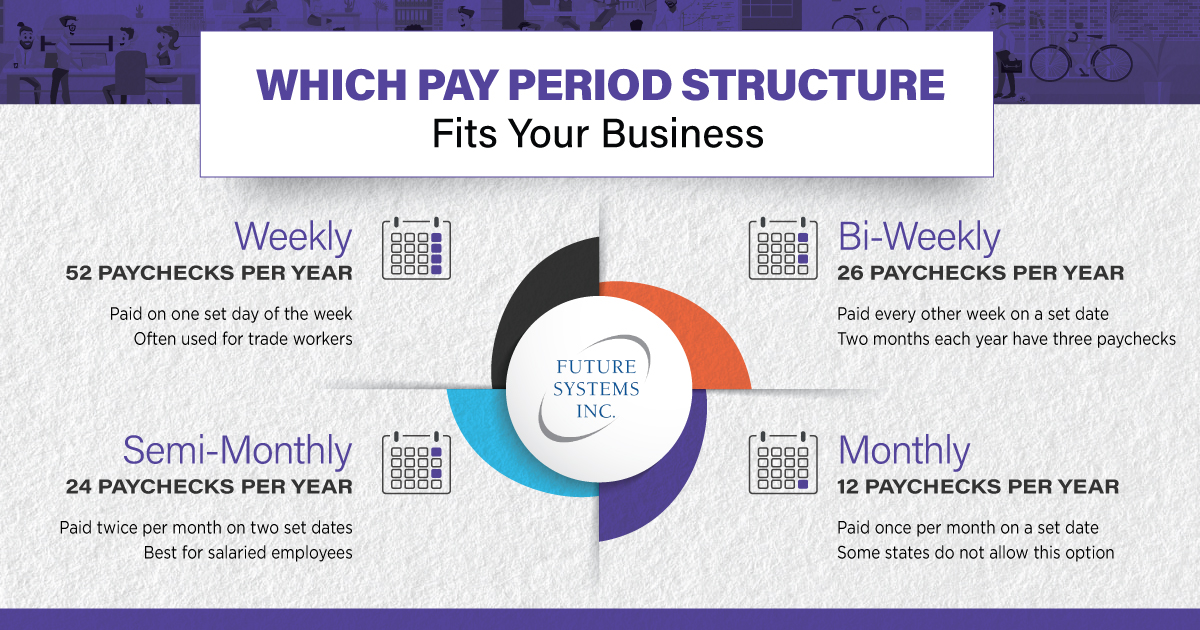Ready to Get Started?
Please give us a call or fill out our contact form and a member of our friendly team will be in touch.
We’re ready to help you today!

Starting a business is an exciting time full of decisions. From finalizing a business plan to creating job positions and eventually hiring employees, you're working 24/7 to make sure everything is ready for the grand opening. One of the more important decisions you need to make during this time is figuring out what payroll schedule you should use. While it may not seem like a big choice compared to all the other items on your to-do list, there are a lot of people that count on this decision. If you choose a schedule that doesn't pay your team frequently enough, it can be hard for them to appropriately plan for the future. But if you choose one that pays them too often, it could end up costing your business. This is why it's important to take a look at the different types of pay periods and understand all the pros and cons that come with them in order to find the best one for your company.
A weekly pay period means paying your employees on a set day every week. This structure is a good option for staff that is paid mostly hourly, like those in the trade industry. Being paid once every week makes it easier for employees to keep track of the hours they're working since they often change from week to week. Depending on the type of company you have, this option may be your only choice in some states.
When you pay your employees bi-weekly, you're paying them once every two weeks which ends up coming out to 26 paychecks per year. This is also a good option for hourly employees, especially for those who collect overtime, because it makes it easier for the employees to see how many extra hours they were working. With this payroll schedule, it's important to remember that there will be two months with a bonus pay period and that your business will have to budget accordingly for this time.
While this might seem similar to the bi-weekly schedule, it's different in that there are set days your employees get paid. So instead of getting paid every other Friday, they get paid on the 15th and 30th of every month (or 1st and 15th). Choosing this option still provides your employees with two paychecks every month, but it gets rid of those months where they get paid three times. This pay structure is one of the most common choices for salaried employees since overtime isn't an issue. If choosing this structure, employers must learn to plan ahead since these days hit on different days of the week every month and could potentially land on a weekend or holiday.
Choosing a monthly pay period schedule pays your employees once a month on a set date (usually the 1st or the 30th). While this choice is often easiest for the employer, it has become one of the least popular options because it's difficult for employees to go an entire month without collecting a paycheck. If you want to choose this option, it's necessary to double check the rules of your state. Every state has rules about how often you can pay your team, and there are some states that do not allow this choice.
It's important to remember that there's no pay period that can work for everyone. When it comes to your company, it's best to look at the number of employees you have, whether they're hourly or salaried, what your business goals are, and what your state requires. Once you can answer these questions, it should be simple choosing the schedule that works for you. If you still need help with your payroll, contact Future Systems to set up your payroll services.
Please give us a call or fill out our contact form and a member of our friendly team will be in touch.
We’re ready to help you today!